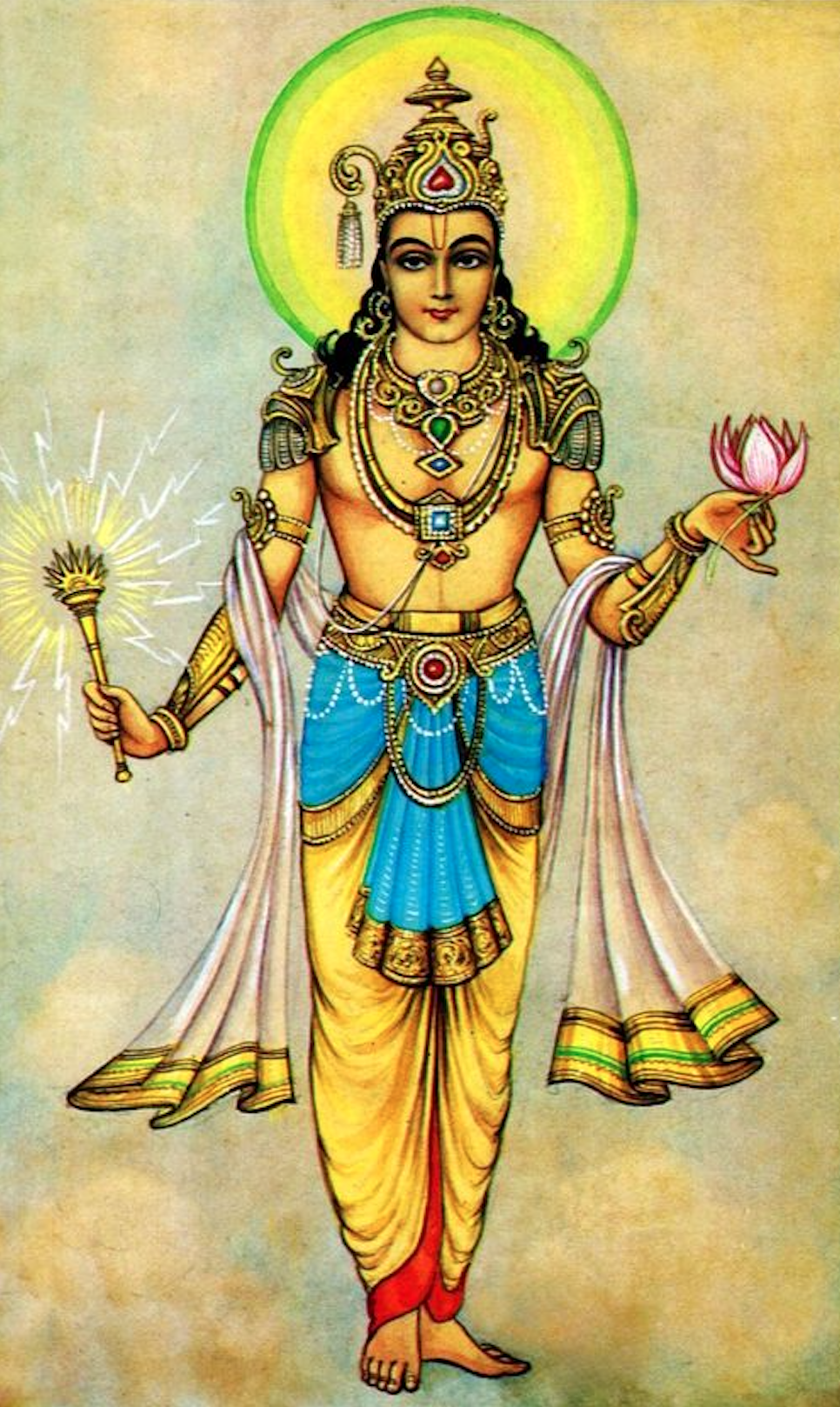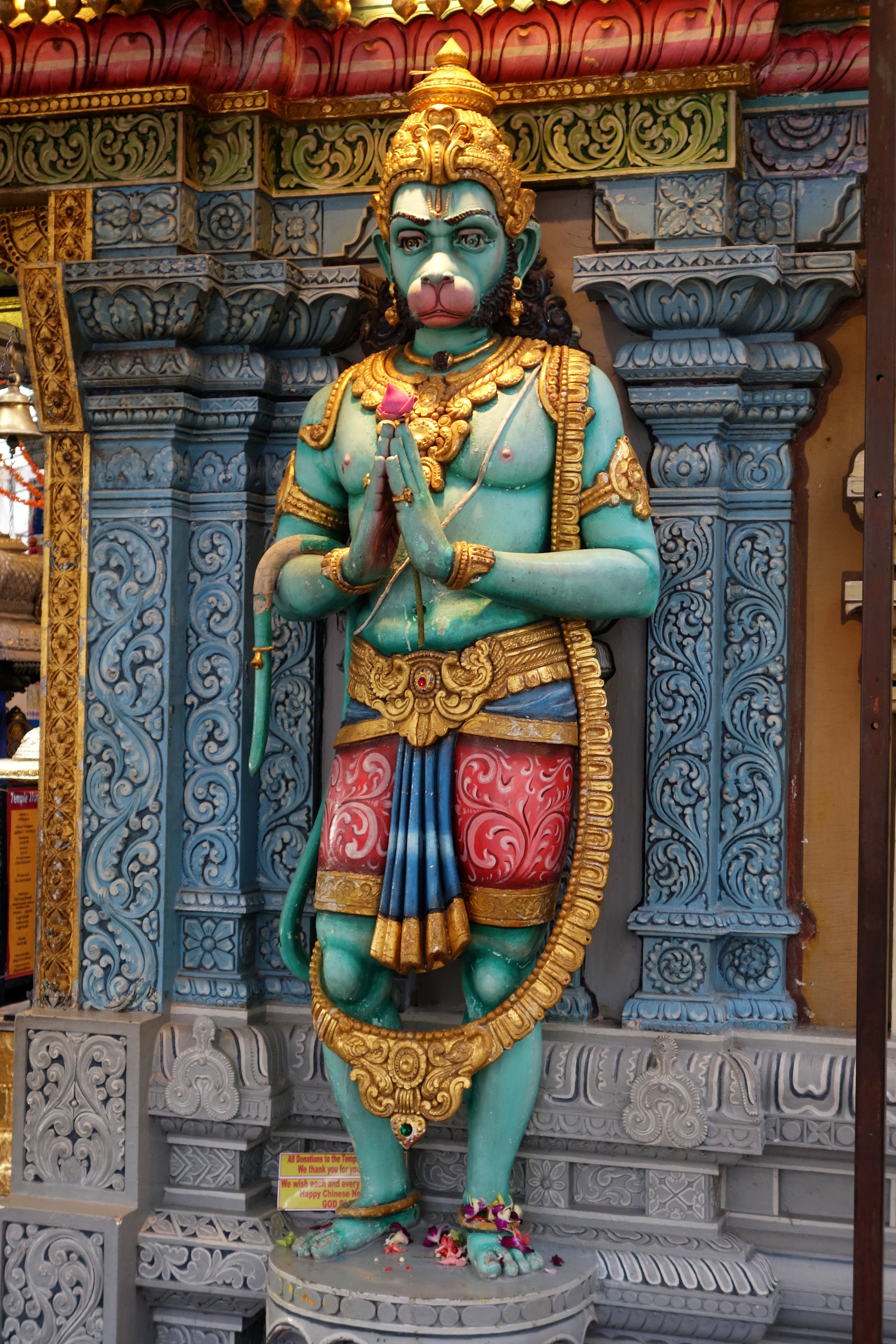|
Svecchāmṛtyu
Svecchāmṛtyu (), also called Icchāmṛtyu () is a Sanskrit concept in Hinduism meaning "self-willed death". In Hindu ancient history, a number of beings gain the boon of svecchāmṛtyu in reward for their actions, allowing them to choose their time and manner of death. Hinduism In the Mahabharata, King Shantanu is stated to have granted the boon of svecchāmṛtyu to his son Bhishma for his selflessness, allowing him to choose the time and manner of his own death. Indra is stated to have granted Hanuman svecchāmṛtyu in acknowledgement of the deity's resilience after surviving the attack of his thunderbolt. Tantrism The Svadhishthana Chakra is the abode of the tattva apas; one conquers death with the awakening of this chakra. As one of the twenty-six siddhis that form part of Kundalini yoga, icchāmṛtyu siddhi gives the yogi the power to die at will. According to Aurobindo, the sadhaka of Integral yoga aims at complete liberation from all attacks of illness, an ... [...More Info...] [...Related Items...] OR: [Wikipedia] [Google] [Baidu] |
Sanskrit
Sanskrit (; stem form ; nominal singular , ,) is a classical language belonging to the Indo-Aryan languages, Indo-Aryan branch of the Indo-European languages. It arose in northwest South Asia after its predecessor languages had Trans-cultural diffusion, diffused there from the northwest in the late Bronze Age#South Asia, Bronze Age. Sanskrit is the sacred language of Hinduism, the language of classical Hindu philosophy, and of historical texts of Buddhism and Jainism. It was a lingua franca, link language in ancient and medieval South Asia, and upon transmission of Hindu and Buddhist culture to Southeast Asia, East Asia and Central Asia in the early medieval era, it became a language of religion and high culture, and of the political elites in some of these regions. As a result, Sanskrit had a lasting effect on the languages of South Asia, Southeast Asia and East Asia, especially in their formal and learned vocabularies. Sanskrit generally connotes several Indo-Aryan languages# ... [...More Info...] [...Related Items...] OR: [Wikipedia] [Google] [Baidu] |
Siddhis
In Indian religions, (Sanskrit: '; fulfillment, accomplishment) are material, paranormal, supernatural, or otherwise magical powers, abilities, and attainments that are the products of yogic advancement through sādhanās such as meditation and yoga. The term ṛddhi (Pali: ''iddhi'', "psychic powers") is often used interchangeably in Buddhism. Etymology ''Siddhi'' is a Sanskrit noun which can be translated as "knowledge", "accomplishment", "attainment", or "success". Method The ''Visuddhimagga'' is one of the texts to give explicit details about how spiritual masters were thought to actually manifest supernormal abilities. It states that abilities such as flying through the air, walking through solid obstructions, diving into the ground, walking on water and so forth are achieved through changing one element, such as earth, into another element, such as air. The individual must master '' kasina'' meditation before this is possible. Dipa Ma, who trained via the Visuddhima ... [...More Info...] [...Related Items...] OR: [Wikipedia] [Google] [Baidu] |
Shiva
Shiva (; , ), also known as Mahadeva (; , , Help:IPA/Sanskrit, [mɐɦaːd̪eːʋɐh]) and Hara, is one of the Hindu deities, principal deities of Hinduism. He is the God in Hinduism, Supreme Being in Shaivism, one of the major traditions within Hinduism. Shiva is known as ''The Destroyer'' within the Trimurti, the Hinduism, Hindu trinity which also includes Brahma and Vishnu. In the Shaivite tradition, Shiva is the Supreme Lord who creates, protects and transforms the universe. In the goddess-oriented Shaktism, Shakta tradition, the Supreme Goddess (Devi) is regarded as the energy and creative power (Shakti) and the equal complementary partner of Shiva. Shiva is one of the five equivalent deities in Panchayatana puja of the Smarta Tradition, Smarta tradition of Hinduism. Shiva has many aspects, benevolent as well as fearsome. In benevolent aspects, he is depicted as an Omniscience, omniscient yogi who lives an Asceticism#Hinduism, ascetic life on Kailasa as well as a house ... [...More Info...] [...Related Items...] OR: [Wikipedia] [Google] [Baidu] |
Vivekananda
Swami Vivekananda () (12 January 1863 – 4 July 1902), born Narendranath Datta, was an Indian Hindu monk, philosopher, author, religious teacher, and the chief disciple of the Indian mystic Ramakrishna. Vivekananda was a major figure in the introduction of Vedanta and Yoga to the Western world, and is credited with raising interfaith awareness and elevating Hinduism to the status of a major world religion. Born into an aristocratic Bengali Kayastha family in Calcutta (now Kolkata), Vivekananda showed an early inclination towards religion and spirituality. At the age of 18, he met Ramakrishna and became his devoted disciple, and later took up the vows of a '' sannyasin'' (renunciate). Following Ramakrishna’s death, Vivekananda travelled extensively across the Indian subcontinent as a wandering monk, gaining first-hand knowledge of the often harsh living conditions endured by the Indian masses under then British India, he sought a way to alleviate their suffering by establ ... [...More Info...] [...Related Items...] OR: [Wikipedia] [Google] [Baidu] |
Amarnath Temple
Amarnath Temple is a Hindu shrine located in the Pahalgam tehsil of the Anantnag district of Jammu and Kashmir (union territory), Jammu and Kashmir, India. It is a cave situated at an altitude of , about 168 km from Anantnag, Anantnag city, the district headquarters, from Srinagar, the summer capital of Jammu and Kashmir (union territory), Jammu and Kashmir, reached through either Sonamarg or Pahalgam. It is an important shrine in Hinduism. The cave, located in Sind Valley, is surrounded by glaciers, snowy mountains and is covered with snow most of the year, except for a short period in the summer, when it is open to pilgrims. In 1989, pilgrims numbered between 12,000 and 30,000. In 2011, the numbers reached a peak, crossing 6.3 lakh (630,000) pilgrims. In 2018 pilgrims numbered 2.85 lakh (285,000). The annual pilgrimage varies between 20 and 60 days. The Amarnath cave, abode of the ''Mahamaya Shakti Pitha'', is one of the 51 Shakti Pithas, the temples of the Indian subc ... [...More Info...] [...Related Items...] OR: [Wikipedia] [Google] [Baidu] |
Integral Yoga
Integral yoga, sometimes also called supramental yoga, is the yoga-based philosophy and practice of Sri Aurobindo and ''The Mother'' (Mirra Alfassa). Central to ''Integral yoga'' is the idea that Spirit manifests itself in a process of involution, meanwhile forgetting its origins. The reverse process of evolution is driven toward a complete manifestation of spirit. According to Sri Aurobindo, the current status of human evolution is an intermediate stage in the evolution of being, which is on its way to the unfolding of the spirit, and the self-revelation of divinity in all things. Yoga is a rapid and concentrated evolution of being, which can take effect in one life-time, while unassisted natural evolution would take many centuries or many births. Aurobindo suggests a grand program called sapta chatushtaya (seven quadrates) to aid this evolution. Worldview Spirit - Satchitananda Spirit or satchitananda is the Absolute, the source of all that exists. It is the One, having ... [...More Info...] [...Related Items...] OR: [Wikipedia] [Google] [Baidu] |
Sri Aurobindo
Sri Aurobindo (born Aurobindo Ghose; 15 August 1872 – 5 December 1950) was an Indian Modern yoga gurus, yogi, maharishi, and Indian nationalist. He also edited the newspaper Bande Mataram (publication), ''Bande Mataram''. Aurobindo studied for the Imperial Civil Service, Indian Civil Service at King's College, Cambridge, King's College, in Cambridge, England. After returning to India, he took up various civil service works under the Maharaja of the princely state of Baroda State, Baroda. He became increasingly involved in nationalist politics in the Indian National Congress and the nascent revolutionary movement in Bengal with the Anushilan Samiti. He was arrested in the aftermath of a number of bombings linked to his organization in a public trial where he faced charges of treason for Emperor v. Aurobindo Ghosh and others, Alipore Conspiracy and then released, after which he moved to Pondicherry (city), Pondicherry and developed a spiritual practice he called Integral ... [...More Info...] [...Related Items...] OR: [Wikipedia] [Google] [Baidu] |
Swadhisthana
Svadhisthana (, IAST: , "''Swa'' means self and "''adhishthana'' means established), is the second primary chakra according to Hinduism, Hindu Tantrism. This chakra is said to be blocked by fear, especially the fear of death. Opening this chakra can boost creativity, manifested desire and confidence. Description Location Svadhisthana is located two finger-widths above the Muladhara chakra (Sanskrit: मूलाधार, IAST: Mūlādhāra, English: "root support") or root chakra which is located in the coccyx (tailbone). Its corresponding kshetram, or, “place,” in front of the body is barely below the belly button. Appearance Svadhishthana is illustrated as a white Nelumbo nucifera, lotus (Nelumbo nucifera). It has six vermilion-colored petals inscribed with syllables: बं baṃ, भं bhaṃ, मं maṃ, यं yaṃ, रं raṃ and लं laṃ. Inside this lotus is a white crescent moon which represents the water region presided over by the deity Varuna ... [...More Info...] [...Related Items...] OR: [Wikipedia] [Google] [Baidu] |
Hinduism
Hinduism () is an Hypernymy and hyponymy, umbrella term for a range of Indian religions, Indian List of religions and spiritual traditions#Indian religions, religious and spiritual traditions (Sampradaya, ''sampradaya''s) that are unified by adherence to the concept of ''dharma'', a Ṛta, cosmic order maintained by its followers through rituals and righteous living, as expounded in the Vedas. The word ''Hindu'' is an exonym, and while Hinduism has been called the oldest religion in the world, it has also been described by the modern term ''Sanātana Dharma'' () emphasizing its eternal nature. ''Vaidika Dharma'' () and ''Arya dharma'' are historical endonyms for Hinduism. Hinduism entails diverse systems of thought, marked by a range of shared Glossary of Hinduism terms, concepts that discuss God in Hinduism, theology, Hindu mythology, mythology, among other topics in Hindu texts, textual sources. Hindu texts have been classified into Śruti () and Smṛti (). The major Hin ... [...More Info...] [...Related Items...] OR: [Wikipedia] [Google] [Baidu] |
Vajra
The Vajra (, , ), is a legendary and ritualistic tool, symbolizing the properties of a diamond (indestructibility) and a thunderbolt (irresistible force). It is also described as a "ritual weapon". The use of the bell and vajra together as symbolic and ritual tools is found in all schools of Tibetan Buddhism. The vajra is a round, symmetrical metal scepter with two ribbed spherical heads. The ribs may meet in a ball-shaped top, or they may be separate and end in sharp points. The vajra is considered inseparable from the bell, and both are sold in dharma stores only in matching sets. The bell is also metal with a ribbed spherical head. The bell also depicts the face of Dhatvisvari, a female buddha and the consort of Akshobhya. The vajra has also been associated as the weapon of Indra, the Vedic king of the Deva (Hinduism), devas and Svarga, heaven. It is used symbolically by the dharma, dharmic traditions of Hinduism, Buddhism, and Jainism, often to represent firmness of spir ... [...More Info...] [...Related Items...] OR: [Wikipedia] [Google] [Baidu] |
Hanuman
Hanuman (; , ), also known as Maruti, Bajrangabali, and Anjaneya, is a deity in Hinduism, revered as a divine ''vanara'', and a devoted companion of the deity Rama. Central to the ''Ramayana'', Hanuman is celebrated for his unwavering devotion to Rama and is considered a '' chiranjivi''. He is traditionally believed to be the spiritual offspring of the wind deity Vayu, who is said to have played a significant role in his birth. In Shaiva tradition, he is regarded to be an incarnation of Shiva, while in most of the Vaishnava traditions he is the son and incarnation of Vayu. His tales are recounted not only in the ''Ramayana'' but also in the '' Mahabharata'' and various ''Puranas''. Devotional practices centered around Hanuman were not prominent in these texts or in early archaeological evidence. His theological significance and the cultivation of a devoted following emerged roughly a millennium after the ''Ramayana'' was composed, during the second millennium CE.Paula Richman ... [...More Info...] [...Related Items...] OR: [Wikipedia] [Google] [Baidu] |





